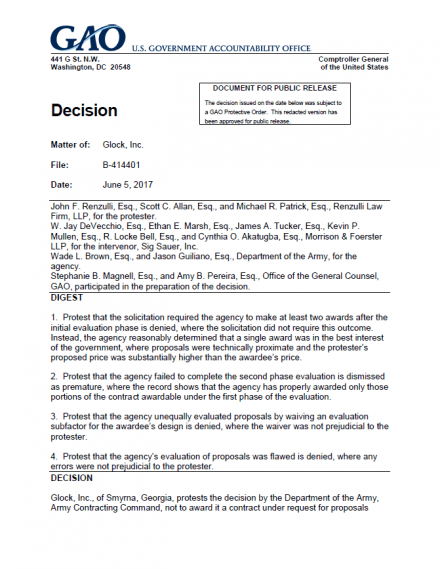As directed by Congress, The Government Accounting Office wrote a report on individual service camouflage and combat uniforms.
Bottom Line Up Front – You’re going to see a lot of people talk about this report this week. I will probably take an entirely different view than any of them. The biggest thing about this report is not so much what it says, but what it doesn’t. It doesn’t come out and say that the vanity patterns have got to go, but implies it. It doesn’t say that all of the uniforms should be literally cut from the same cloth but it implies that they should. Instead, the report points to the 2010 NDAA language requiring the services to work together. Thus far, it seems that only the Army and Air Force are doing so. And then, there are a lot of missing data points. Also, some uniforms that aren’t combat uniforms are considered so and vice versa. It’s a good start but for me, it’s far from definitive.
First off, the report lays lots of blame on the Army and Air Force and the Marine Corps and Navy get off relatively scot-free. My take on that? Bullshit. The Marine Corps garners the ultimate blame for coming up with this service branding = camouflage nonsense in the first place. Furthermore, the report is highly critical of the Air Force for their noncombat camouflage uniform. For some reason it fails to hold the Navy to the same standard. Their issue NWU Type I is in a blue pixelated pattern for God’s sake! Of their two ‘combat’ oriented patterns only one is standard issue (NWU Type III / AOR2). The Desert variant is still only for NSW issue leaving Naval ground combatants without a service issue desert uniform since the CNO withdrew use of the old 3-color desert as of June of this year. Granted, both the Army and Air Force really screwed this up, but they are hardly the only ones.
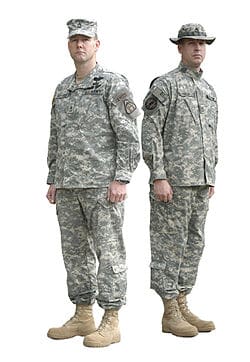
Second, the timing of this report is most unfortunate. The Army is knee deep in a testing cycle that will fundamentally change the way we look at camouflage and the various military operating environments we send our troops to. The Army has really made lemons into lemonade here and taken this thing to a whole new level. Unfortunately, it took UCP to make this happen. If they would have adopted anything more effective, they wouldn’t be here. Everyone in DoD is going to benefit from their work.
Sure, UCP is awful and the report is right on time about this. The acquisition process exists to prevent SGT Yorks and the Army deviated from the path and bough themselves the uniform equivalent. But from that misstep, they are undertaking the only study of its kind, in history. All of the ‘winners and losers’ from this GAO report will most likely be looked at in an entirely new light by early next year. The Marine Corps has been lucky. Nothing more. They did conduct data collection and wear tests for the cut of the MCCUU but they didn’t go to anywhere near the lengths that the Army has taken so far and continues to undertake in order to consider the effectiveness of their patterns.
I think that once we see the results of the current Army effort, some of the conventional wisdom like using solid colored PPE has already been shown to be counterintuitive based on data collected a few years ago during Afghanistan based photometric studies. In the end, the Army will know how their candidate patterns perform all over the world. They’ll also know how all of the current issue patterns perform all over the world. Hopefully, the Army and their sister services will have the fortitude to make use of that data. Budgets and service parochialism be damned.
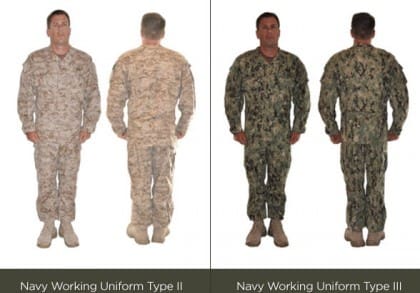
In my opinion, at this point, the Navy has the best ‘combat’ uniforms. They are also the newest. The NWU Type II and III adapted uniform lessons from SOCOM and are very well laid out. Much better than any other service uniforms. On the other hand, the NWU Type I is of a similar cut to the USMC’s MCCUU but in a blue pixelated pattern. It’s a garrison and shipboard only utility uniform yet enjoys the popular cut of the Marine utilities. If only they’d issue the Type III to everyone.
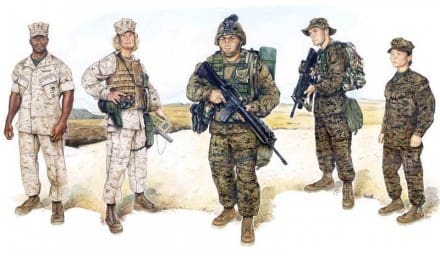
The Marine Corps Combat Utility Uniform came before any of the others and is offered in two patterns (Woodand and Desert) but really isn’t a combat uniform. For that, the Marines adopted a Crye designed combat uniform called Flame Resistant Organizational Gear. Unfortunately, they haven’t updated the design to accept integrated kneepads like SOCOM’s PCU level 9 or the Army Combat Pant. Overall, most Marines like both uniforms and they’ve started to purchase FROG in their woodland variant pattern, hedging their bets against future threats.
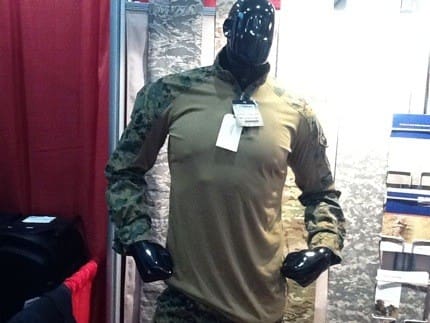
What did I learn from this report that surprised me? The Army estimates that the recapitalization of camouflage will cost them $4 Billion over the next five years. For some unexplained reason, they can do it this time for $1 Billion less than last time. Maybe they aren’t going to offer free ACUs in the new pattern(s) to serving Soldiers like they did last time. This means a lot of personal funds will be spent on new uniforms. Personally, I see this camo change worth a lot more than last time. Soldiers abhor UCP and I predict that the day the Army makes the announcement on which pattern they are migrating to, anything and everything available in that pattern will sell out via individual purchase, that day and for the foreseeable future. Commercially, this might rival the release of iPhone 5.
I also learned that the the GAO cherry picks, at least with this report. They call ACU and ABU combat uniforms when they aren’t. Maybe they were originally designed to be, but this war has made them for garrison only. Additionally, the Army seems to get zero credit for developing the ACU as a uniform. it not only refined the requirement through development of the Close Combat Uniform, but also conducted combat assessments of the CCU before transitioning it to become the ACU.

As a tangent, this report has also reinforced my assertion that the FR ACU is a redundant uniform and a waste of money. With the advent of the Army Combat Pant, the Army has a real, purpose-built combat uniform if it is paired with the Army Combat Shirt. The ACU is a garrison uniform and there’s no need for an FR garrison cut uniform. Perhaps the ACU should be further simplified to lower the cost for use in garrison.
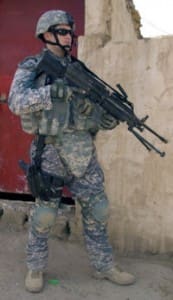 In the camo uniform follies, the Air Force is ultimately the biggest loser. They kept the worst of the BDU, added the worst of the ACU, made it from the heaviest fabric available and then added an anti-wrinkle treatment which doesn’t breath. Now, 6 years on they are authorizing a new fabric that is lighter, but the base uniform cut still stinks. But that’s just for a garrison uniform.
In the camo uniform follies, the Air Force is ultimately the biggest loser. They kept the worst of the BDU, added the worst of the ACU, made it from the heaviest fabric available and then added an anti-wrinkle treatment which doesn’t breath. Now, 6 years on they are authorizing a new fabric that is lighter, but the base uniform cut still stinks. But that’s just for a garrison uniform.
Although it was in digital tigerstripe (their vanity pattern) the Air Force put together a great clothing system for deployed Airmen called Airman Battle System – Ground that was not only an FR combat uniform but also provided FR environmental clothing. When the Air Force took the easy road and adopted Army OCIE for Afghanistan it stripped its Airmen of FR cold weather clothing. Having Airmen blend in with Army elements makes sense. “Dumbing” them down doesn’t.
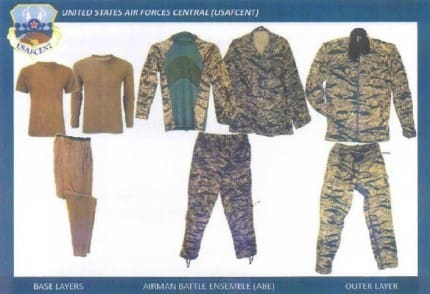
The Air Force can’t have a common garrison and combat uniform because its NCOs want to live in the past. Practicality be damned. Bicep pockets get in the way of big stripes sewn on the sleeve. Unless they can adapt, this issue may continue to keep the Air Force from adopting a modern uniform design. Hopefully, they will work it out and go with the Army on the uniform and camouflage thing. They seem to be making it work in Afghanistan.
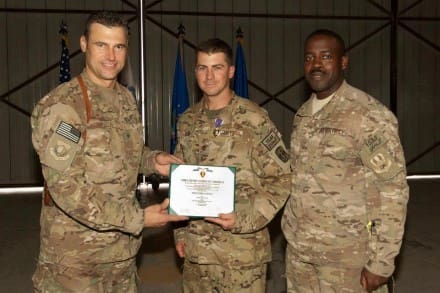
Make sure you read this report. If you are interested at all in DoD camo programs or combat uniforms, you need to read it for yourself. It’s not very long.
GAO Report on Camo and Combat Uniforms


